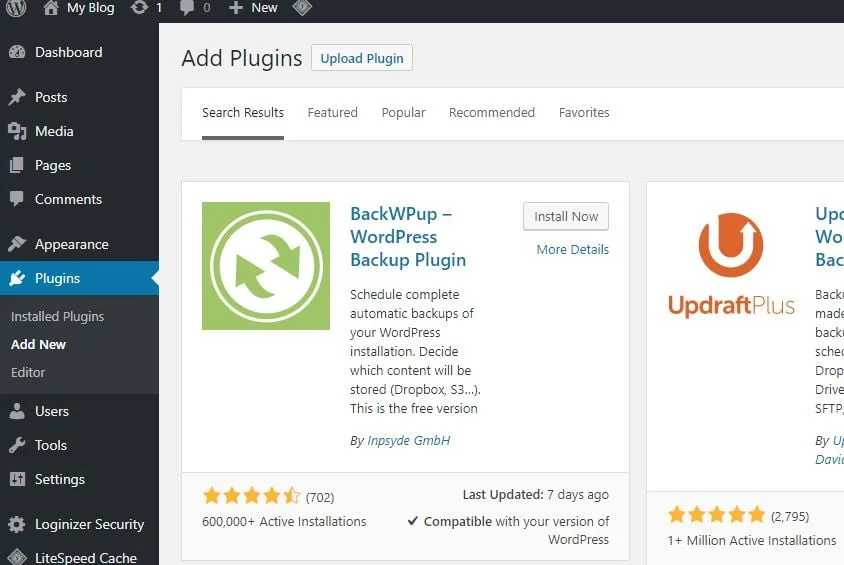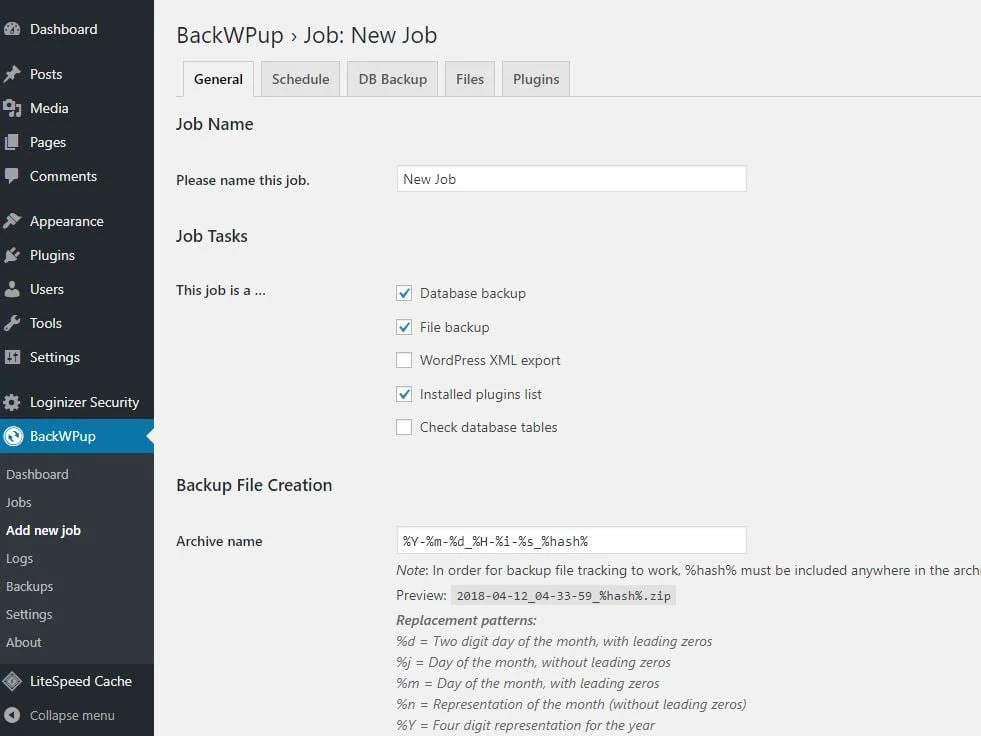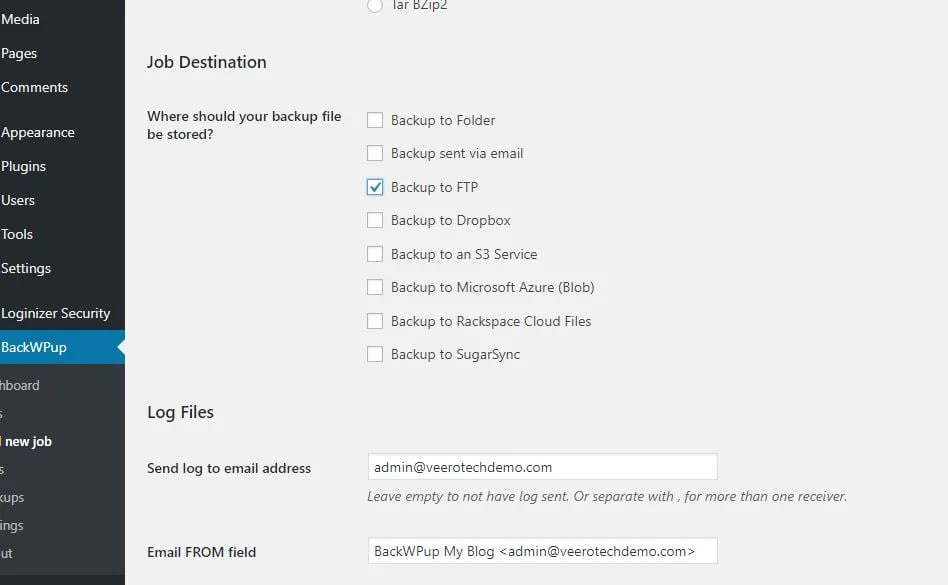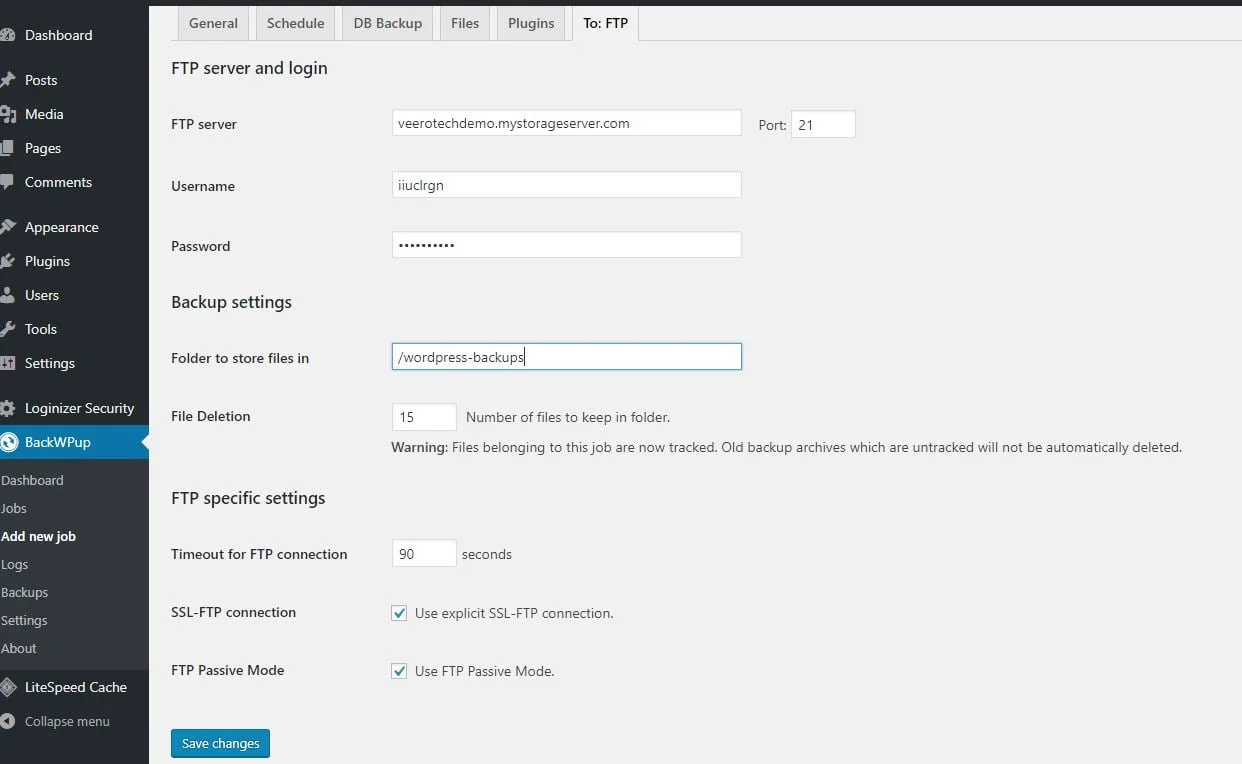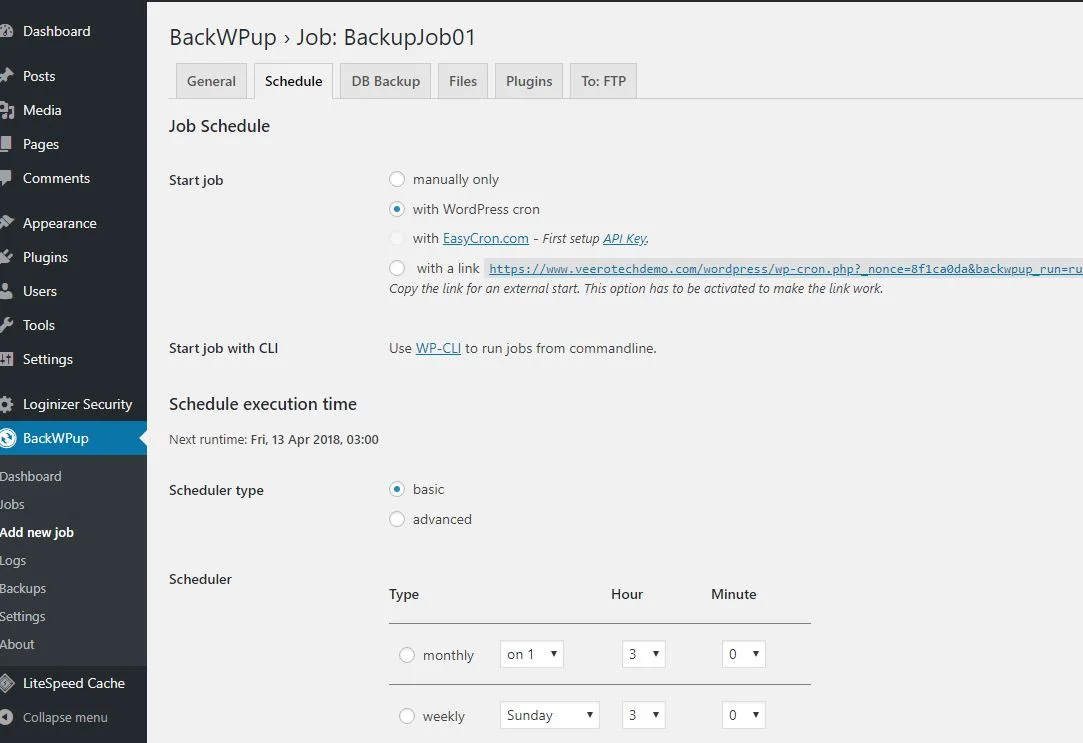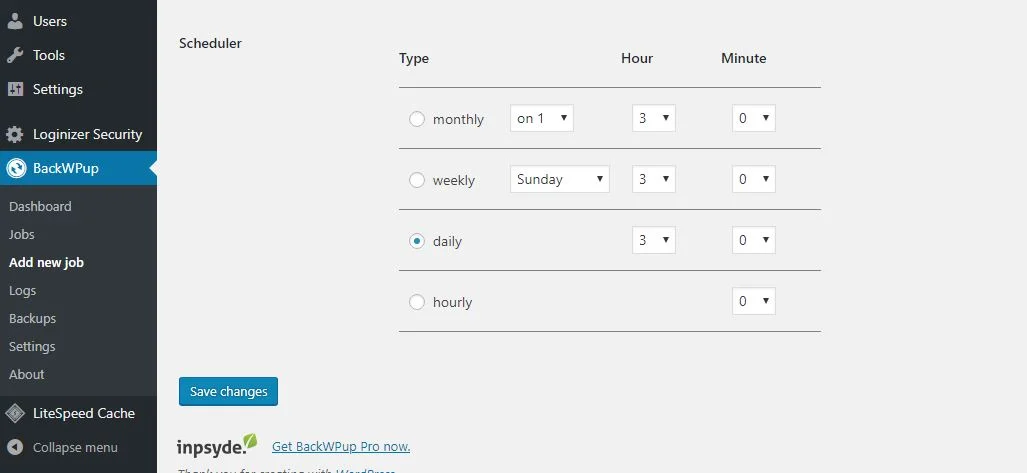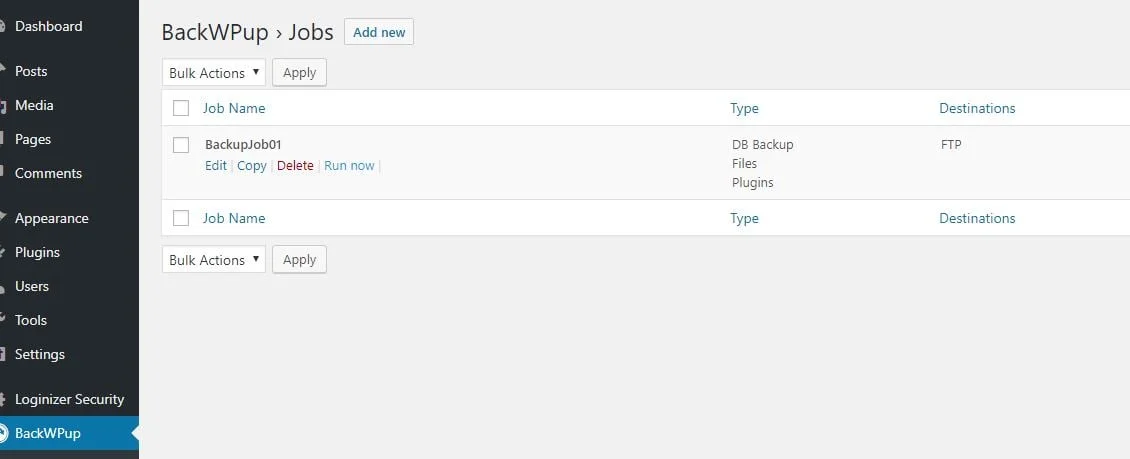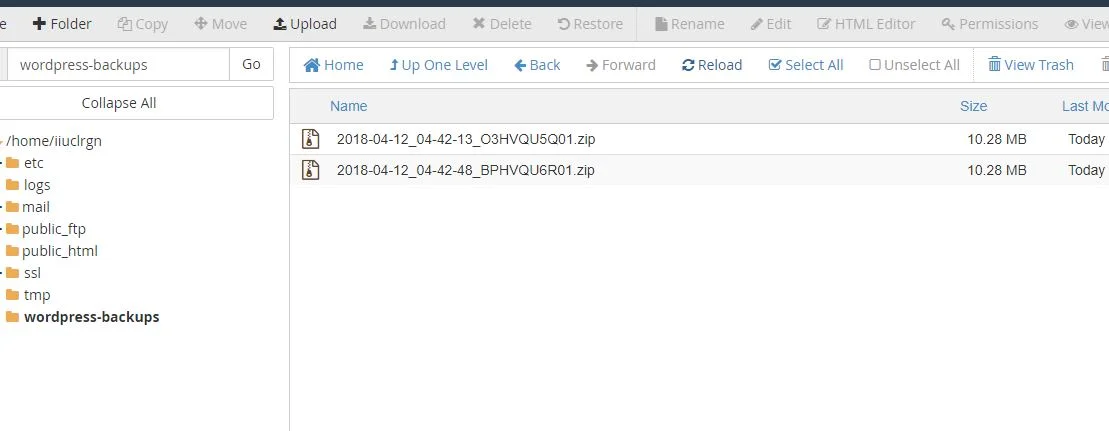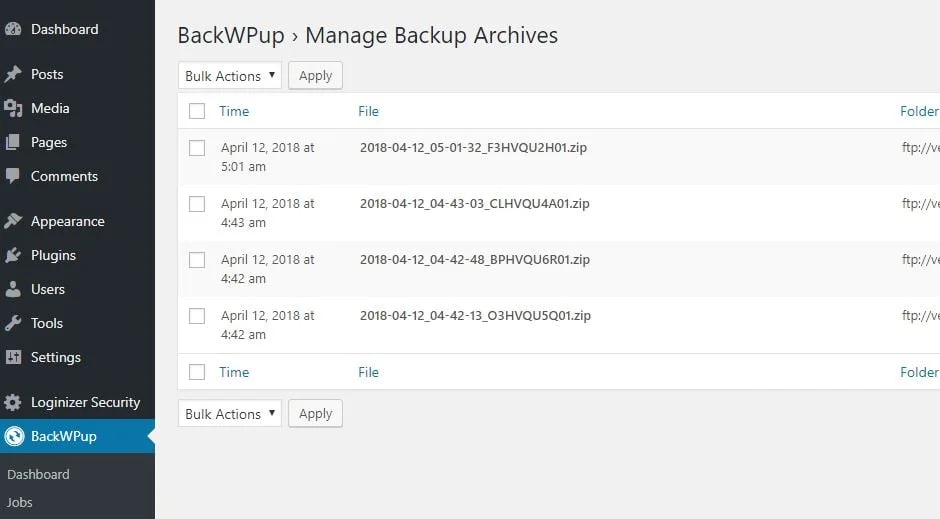BackWPup is a free backup plugin for WordPress that has the option for remote storage of your backups as well as scheduled backups. You can find more information here about the plugin: BackWPup
Don’t have remote FTP backup storage space? Get it here!
To get started, navigate to Plugins > Add New from your WordPress admin dashboard. In the search box type “backwpup”.
Click Install Now & then Activate after installing. The next step will be to navigate to the BackWPup option in the menu of the WordPress admin dashboard. You’ll first want to click “Add new job” and fill out the details similar to those below.
If using our SSH/FTP Storage you’ll want to select the option for Backup to FTP. This guide will focus on using our SSH/FTP storage as a backup destination.
Settings to choose: Database backup, File backup, Installed plugins list, Backup to FTP
Once you’ve completed those fields, you can enter in the email fields if you’d like to get notifications. Please note though, for email notifications to work, your hosting account/WordPress installation MUST send using proper headers and the to/from addresses listed must be valid email addresses.
After you’ve completed those details, click save at the bottom.
The next step will be to go to the FTP tab to complete the FTP storage connection configuration. You’ll want to enter the following information & choose the following options:
1. FTP server / FTP username / FTP password
2. Folder (this must exist already – the format is /folder-name – note the / must be present)
3. SSL-FTP (not required but we recommend this for security)
4. FTP Passive Mode
For setting your Folder to store files in, please see our setup guide here if you’re unfamiliar with creating this directory here: https://www.veerotech.net/kb/setting-sshftp-storage-backup-data-storage/
After you have completed the steps above, click Save changes at the bottom. In the next step, we’ll configure a schedule for the backup job to run. This schedule can be set to various time frames. To run the backup automatically, you can choose the WordPress cron option. We recommend running the backup once per day. While it can be scheduled to run as frequently as hourly, please note that this could cause problems with your hosting account as a backup is a resource intensive task depending on the size of the backup.
To list the active backup jobs you have created, navigate to BackWPup from the WordPress admin menu and then Jobs. From there, you can list the backup jobs, edit and manually run any jobs you have created.
To manually run a backup job, hover your mouse over the backup job and choose Run Now. Choosing Run Now will start the backup job on demand as soon as you click it. Once clicked, you’ll see the progress screen as well as any errors if the job encounters a problem.
After we’ve run the on demand backup job by clicking Run Now, we can check our FTP Storage for the backups. Shown below, you’ll see there are now backups present in the storage space & directory that we created. Please note, before setting the directory in the FTP settings, you must have already created this directory on your FTP destination server/storage account.
Additionally, you can list the current backups within the BackWPup panel by going your WordPress admin dashboard menu > BackWPup > Backups. You can view, delete or download the backups that are listed here. Please note, while the backups are listed here, BackWPup is intended to perform a backup task only, it does not have restore functionality that we are aware of.

If you have any web hosting questions please feel free to reach out to us. We're happy to help.

